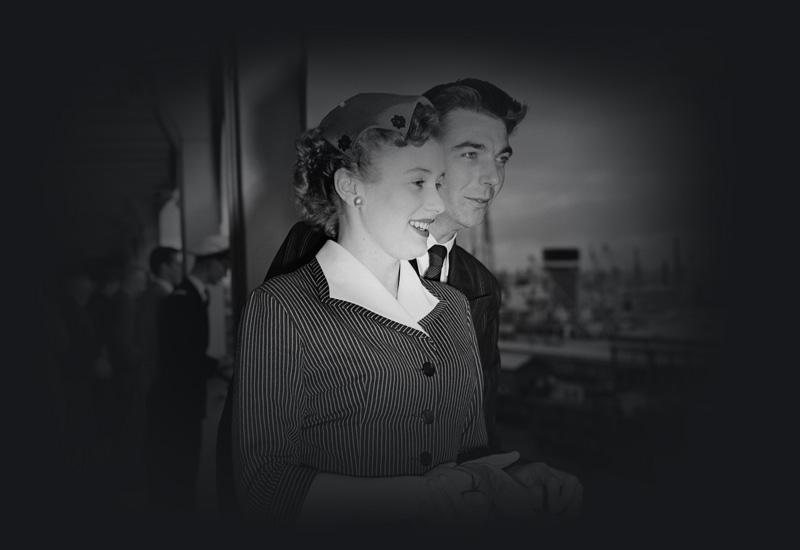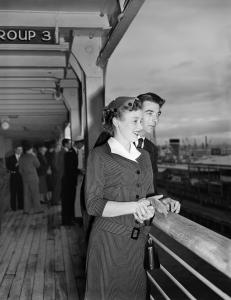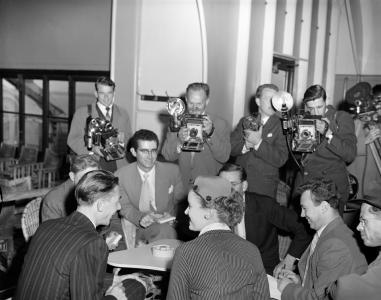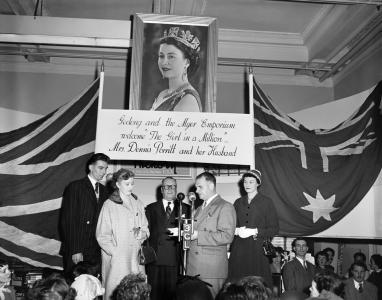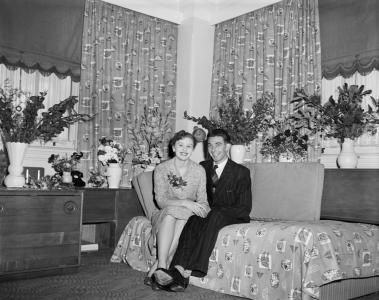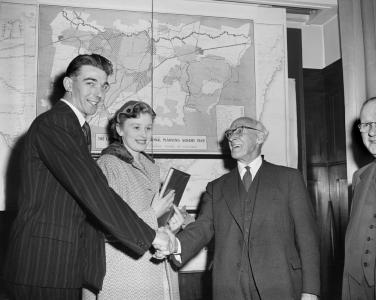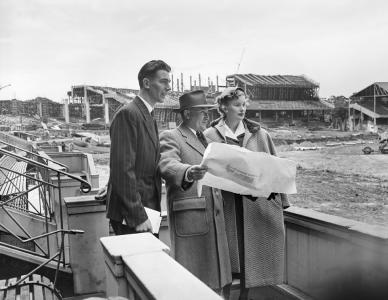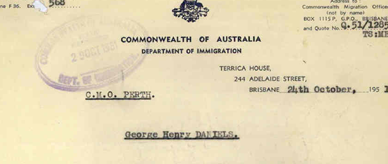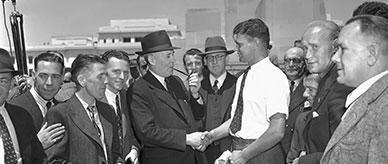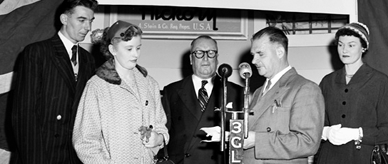Australia's post-war immigration publicity campaign was in full swing by 1955. The arrival of the one millionth post-war migrant quickly grew into the most widespread and expensive campaign the Department of Immigration had created in its time.
The measured and deliberate selection of who would be chosen to represent the ‘Millionth Migrant’ showed just how important the campaign was to the government. The decision to name 21-year-old Barbara Porritt, a young woman from Redcar, Yorkshire in the UK, was carefully made to ensure that the department was seen to be selecting the best possible people to migrate to Australia.
Barbara and her husband Dennis embodied the youthful, healthy and hopeful couple that was the ultimate aim for the immigration program. They were consciously chosen to be attractive, affable, employable, fertile and ready to assimilate into the Australian way of life. Ultimately, they were chosen to be acceptable to the Australian public of the 1950s.
The government campaign included a full-length colour newsreel showing them prepare for their move to Australia, including footage of their wedding and voyage by ship to Melbourne, and their arrival into their new home. The couple were greeted with much attention from dignitaries and the press. A large collection of photographs captured their journey. These photographs are now in the collection of the National Archives of Australia.

